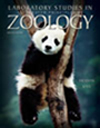
|  |
Feature SummaryDistinctive Features in the Twelfth EditionProject exercises are placed with certain chapters, within sections entitled "Experimenting in Zoology." Two project exercises use molecular techniques to explore questions that are important to our understanding of zoology and evolution. Some of these exercises can be completed within a single laboratory period; others are followed for a longer period. In all project exercises the student follows experimental procedures, records and analyzes quantitative data, and draws conclusions from the results. Many instructors will want their students to gain additional experience by writing a laboratory report in which the student states the objectives, methods followed, results obtained, and conclusions that can be drawn from the results. The Experimenting in Zoology exercises are: Genetic Polymorphism in Tetrahymena (Exercise 6); Effect of Temperature on the Locomotor Activity of Stentor (Exercise 6); Regeneration in Planaria (Exercise 9); Behavior of the Medicinal Leech, Hirudo medicinalis (Exercise 12); PhototacticBehavior of Daphnia (Exercise 14); Aggression in Paradise Fish, Macropodus opercularis (Exercise 18); Analysis of the Multiple Hemoglobin System in Carassius auratus, the Common Goldfish (Exercise 18).
Exercises have been made more interactive, with questions placed throughout the text and with spaces provided for students to write down their responses and observations. This "active learning" approach involves students in the exercise and encourages them to think about the information as they read. Some questions may require students to consult their textbook for the answers. In some exercises we have placed questions within the figure legends, to be answered in the spaces provided when the student consults the figure.
Several new and revised illustrations were prepared for this edition. Examples of new illustrations include earthworm mating (Figure 12-4) and the skeleton of the perch (Figure 18-10).
As with the previous edition we have included the derivation of specialized biological terms and genera where first introduced. This is an important assist to students in becoming familiar with the Latin and Greek roots from which technical terms are built. We repeatedly emphasize that the species is a binomial by spelling the complete species binomial in the classification breakdown for each representative species in the exercises.
There are many aids for the student in this laboratory manual. Throughout the exercises, working instructions are clearly set off from the descriptive material. Classifications, where appropriate, are included with the text, together with a "pie" diagram showing the relative sizes of the classes in a phylum. Function is explained along with anatomy. Topic headings help the student mentally organize the material. Metric tables and definitions are placed on the inside front and back covers for convenient use. Much of the artwork was designed to assist the student with difficult dissections.
Directions for preparing the exercises in this manual are found in Appendix A. For each exercise we have listed the materials required, directions for preparing solutions, suggestions for maintaining and working with living materials, suggestions for demonstrations, and a listing of appropriate references, most of which are annotated. This information is convenient to the instructor as well as to students who may later wish to consult or implement an exercise.
This manual's website contains an interactive exercise on cladistics called "Taxonomic Classification and Phylogenetic Trees." This exercise, prepared by Louise Wootton of Georgian Court College, leads the student through the construction of a dichotomous key and the construction of cladograms, and will be particularly useful as a supplement to Exercise 5 in this manual.
Exercises present in previous editions of the manual, but removed from the present edition, can be found at our zoology web site and are available to any instructor who wishes to use them. These include an exercise on cell function (Exercise 3 in the 9th edition) and nine exercises on physiology and genetics (Exercises 24-27 in the 8th edition). These exercises are available on this textbook's website. |
|
|